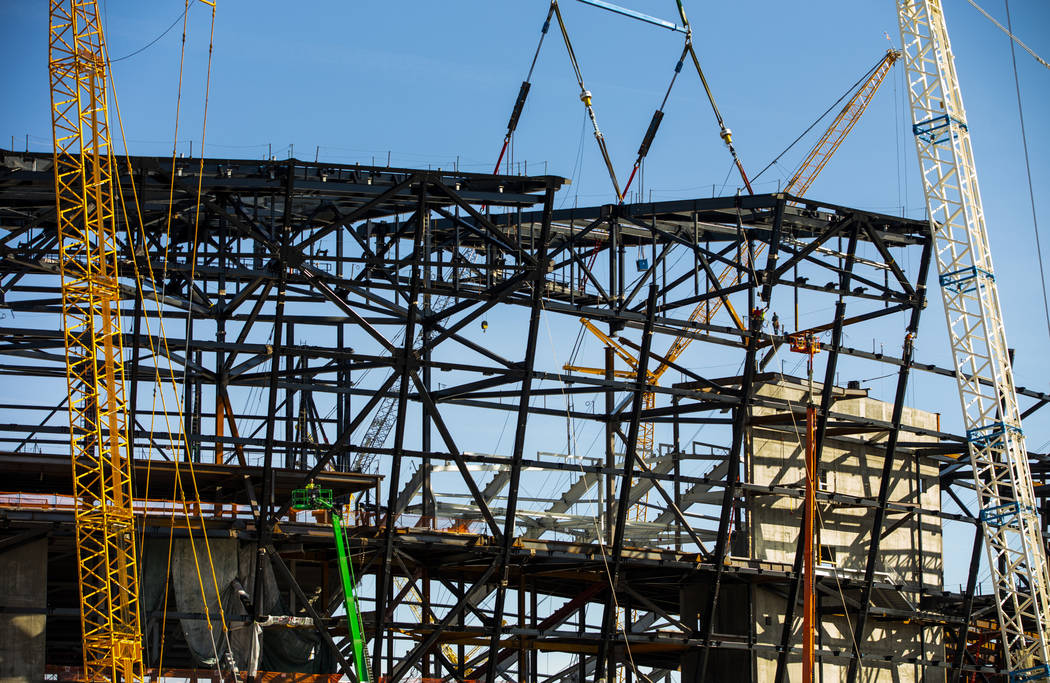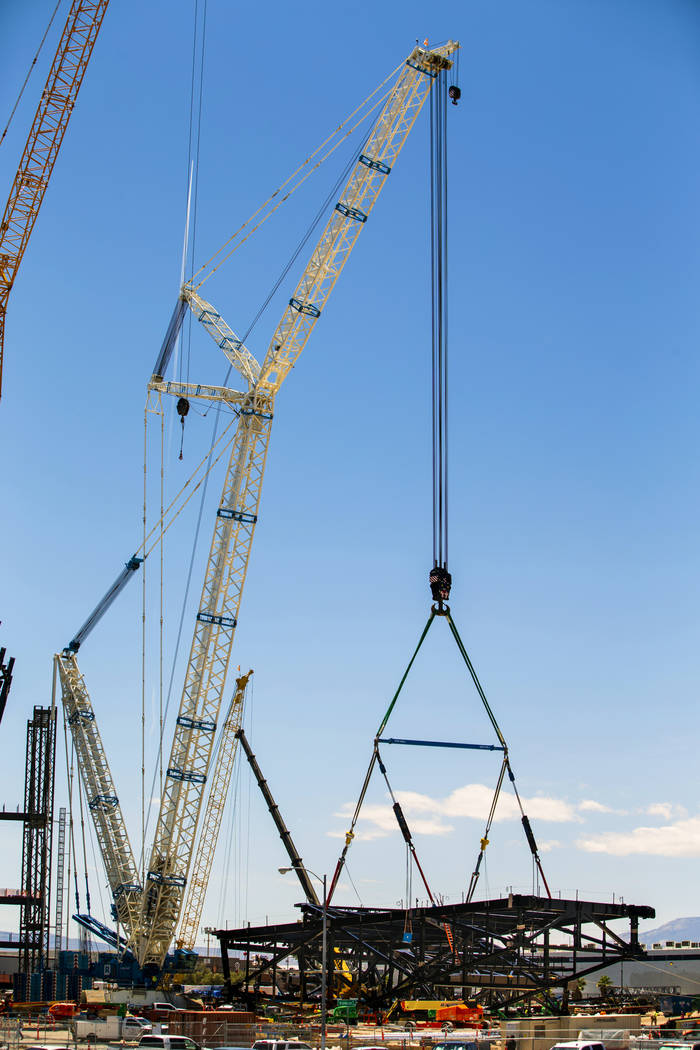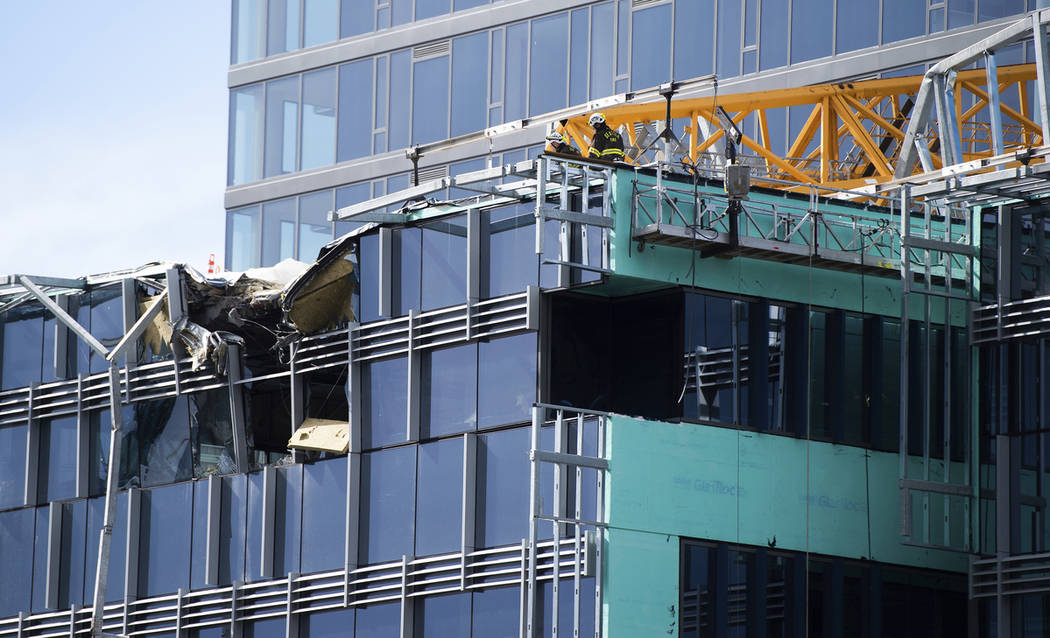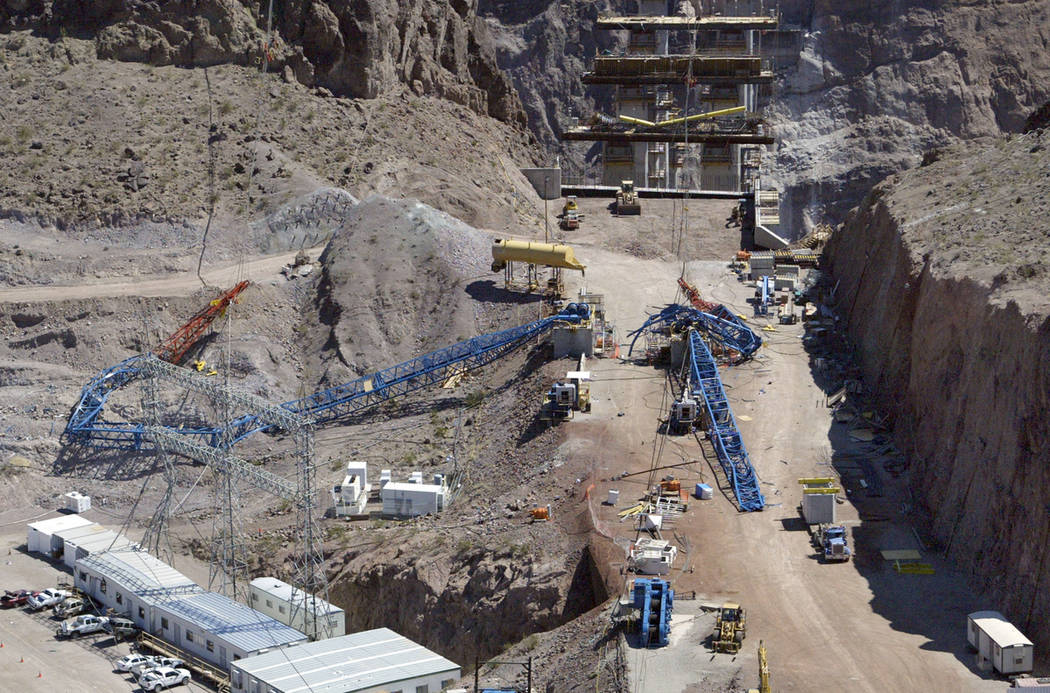Nevada ensures crane safety with strict regulations for operators
This month, 16 cranes stretching as high as 350 feet are hoisting 65-ton canopy trusses atop the massive Las Vegas Stadium now under construction.
Along the Strip and in Downtown Las Vegas, nine more cranes are lifting construction materials as high as 600 feet into the air as tourists and taxis pass by below.
The towering machines are a familiar sight across Southern Nevada’s skyline, but construction experts say strict protections are in place to prevent a crane collapse like the one that killed four people in downtown Seattle last week.
“Nevadans can feel pretty safe about tower crane use because of the (safety) requirements we have,” said Jess Lankford, chief administrative officer for Nevada’s Occupational Safety and Health Administration. “Here we make an extra effort to understand how it’s going to be put up, who is going to put it up, what’s the plan for the erection.”
Nevada requires operators of all tower cranes — which are stationary and must be assembled and disassembled for use — and some mobile cranes to hold a national certification for the equipment they are using, Lankford said. Becoming certified typically requires hundreds of hours of supervised training on the machine.
In the Seattle accident, a crew was disassembling a crane on the roof of a building being constructed as part of the new Google Seattle campus. The mast toppled, killing two bystanders and two ironworkers.
Plans to erect or dismantle cranes in Nevada must be submitted to OSHA for review at least 15 business days before the equipment goes up or comes down. “Clear zones” surrounding cranes are kept free of workers and pedestrians. Any lift deemed highly hazardous shuts down when winds exceed 35 miles per hour, and some projects shut down their cranes at much lower wind speeds.
“Safety is paramount. You try to anticipate all the risks,” said Willie Acosta, a crane engineer for Dielco Crane Service Inc. “The taller the piece of equipment, the bigger the area of destruction might be.”
The state’s rules, which go above-and-beyond federal regulations, were overhauled after a tower crane in Laughlin fell into the parking lot of the Riverside hotel-casino and killed three people in 1994. In 2006, high winds brought down four tower cranes at the Hoover Dam bypass bridge project; no one was injured, but the project was significantly delayed.
Nevada lawmakers put the certification rule on the books in 2005. Lankford said it’s important to keep crane operators trained, even with advancements in technology making it easier to use the machines.
“I think the individual needs to understand the dynamic of lifting a load like that,” he said.
Contact Michael Scott Davidson at sdavidson@reviewjournal.com or 702-477-3861. Follow @davidsonlvrj on Twitter.


































